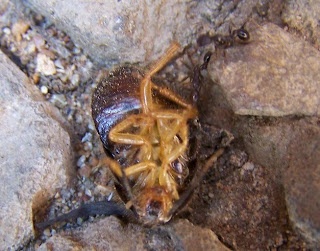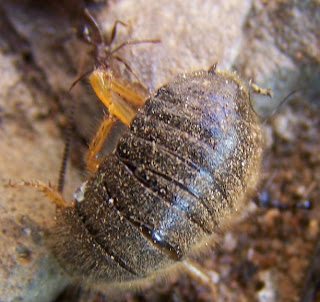Although the word turtle is widely used to describe all members of the order Testudines, it is also common to see certain members described as terrapins, tortoises or sea turtles as well. Precisely how these alternative names are used, if at all, depends on the type of English being used.
British English normally describes these reptiles as turtles if they live in the sea; terrapins if they live in fresh or brackish water; or tortoises if they live on land. However, there are exceptions to this where American or Australian common names are in wide use, as with the Fly River turtle.
American English tends to use the word turtle for all freshwater species, as well as for certain land-dwelling species (e.g. box turtles). Oceanic species are usually referred to as sea turtles, and tortoise is restricted to members of the true tortoise family, Testudinidae. The name terrapin is typically reserved only for the brackish water diamondback terrapin, Malaclemys terrapin; the word terrapin being derived from the Algonquian word for this animal.

Female tortoises dig nesting burrows in which they lay from one to thirty eggs. Egg laying typically occurs at night, after which the mother tortoise covers her clutch with sand, soil, and organic material. The eggs are left unattended, and depending on the species, take from 60 to 120 days to incubate. Hatchlings are born with an embryonic egg sac which serves as a source of nutrition for the first 3 to 7 days until they have the strength and mobility to find food.
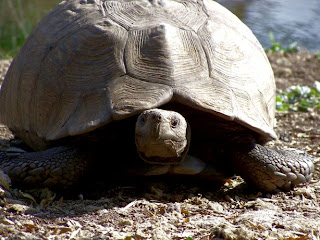
There are many old wives tales about the age of turtles and tortoises, one of which being that the age of a tortoise can be deduced by counting the number of concentric rings on its carapace, much like the cross-section of a tree. This is not true, since the growth of a tortoise depends highly on the access of food and water. A tortoise that has access to plenty of forage (or is regularly fed by its owner) will grow faster than a Desert Tortoise that goes days without eating.
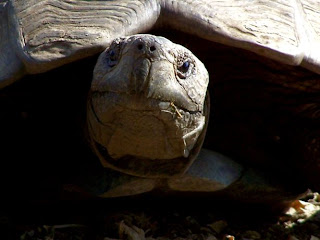
Tortoises generally have lifespans comparable with those of human beings, and some individuals are known to have lived longer than 150 years. Because of this, they symbolize longevity in some cultures, such as China. The oldest tortoise ever recorded, almost the oldest individual animal ever recorded, was Tu'i Malila, which was presented to the Tongan royal family by the British explorer Captain Cook shortly after its birth in 1777. Tui Malila remained in the care of the Tongan royal family until its death by natural causes on May 19, 1965. This means that upon its death, Tui Malila was 188 years old. The record for the longest-lived vertebrate is exceeded only by one other, a koi named Hanako whose death on July 17, 1977 ended a 215 year life span.
The Alipore Zoo in India was the home to Adwaita, which zoo officials claimed was the oldest living animal until its death on March 23, 2006. Adwaita (sometimes spelled with two d's) was an Aldabra Giant Tortoise brought to India by Lord Wellesley who handed it over to the Alipur Zoological Gardens in 1875 when the zoo was set up. Zoo officials state they have documentation showing that Adwaita was at least 130 years old, but claim that he was over 250 years old (although this has not been scientifically verified). Adwaita was said to be the pet of Robert Clive.
Info:
https://simple.wikipedia.org/wiki/Turtle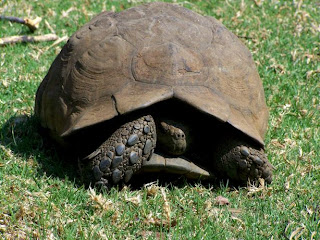
 I started peering under the leaves to see if I could find anything, maybe spiders....... This is a juvenile Bark Mantis (Tarachodes) and if it was not for his legs, I would have missed him.
I started peering under the leaves to see if I could find anything, maybe spiders....... This is a juvenile Bark Mantis (Tarachodes) and if it was not for his legs, I would have missed him. It is of medium size and move about the trunks of trees in search of caterpillars and other prey.
It is of medium size and move about the trunks of trees in search of caterpillars and other prey. 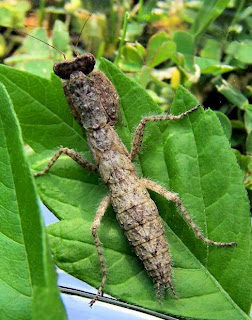 It is fairly flattish to resemble bark. His total body length is about 1 1/2 inches and what was interesting to me, besides the way he blended in, was the fact that he does not have a long neck as most mantids do.
It is fairly flattish to resemble bark. His total body length is about 1 1/2 inches and what was interesting to me, besides the way he blended in, was the fact that he does not have a long neck as most mantids do. He has incredible eyes and as he was starting to get restless, I dashed to the house to find something to catch him in so that I could get better pics of him as it was rather dark under the tree and cycad.
He has incredible eyes and as he was starting to get restless, I dashed to the house to find something to catch him in so that I could get better pics of him as it was rather dark under the tree and cycad.








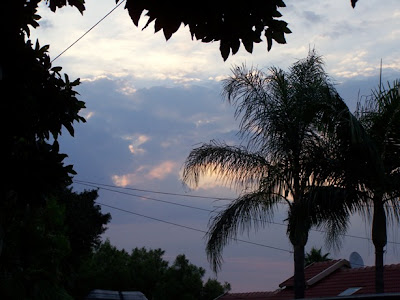


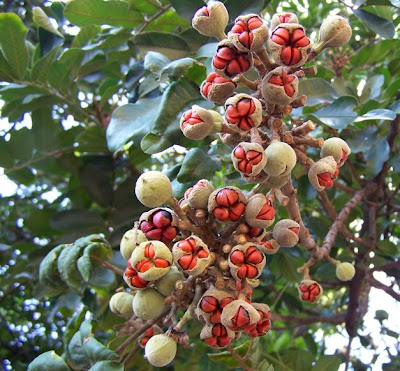








 The secretion from these frogs skin is used on the tip of poison arrows.
The secretion from these frogs skin is used on the tip of poison arrows.






